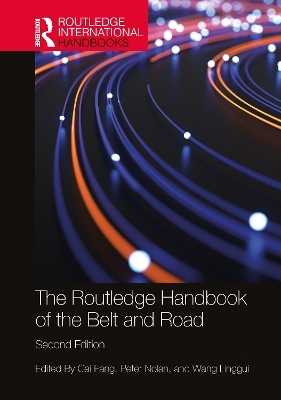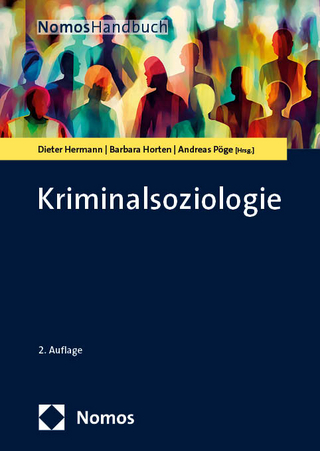
The Routledge Handbook of the Belt and Road
Routledge (Verlag)
978-1-032-26223-9 (ISBN)
The second edition of The Routledge Handbook of the Belt and Road encompasses the many recent developments across the Belt and Road Initiative (BRI) from 2019 to 2021, while retaining the comprehensive introduction to BRI from the first edition.
The Handbook is a comprehensive review of the theory and practice of the BRI, the contributors to which are leading researchers in their fields. It illuminates the intentions and principles, history and current status, basic knowledge and latest studies, and promotion mechanisms on the whole BRI. This edition includes 132 entries in total, with a supplementary section on the Belt and Road forums for international cooperation, 22 brand new entries, and 13 revised and updated chapters, reflecting current progress. The book provides an authoritative and up-to-date overview of the BRI, and thereupon an explanatory interpretation of China’s development strategy and international policy stance.
Already serving as the essential “encyclopaedia” of the BRI, this second edition will be a must-read for members of global think tanks, policy makers, and observers involved in the BRI□ construction, as well as researchers interested in international relations, Chinese economics, politics, and international policy.
Editors Cai Fang is former Vice President of the Chinese Academy of Social Sciences (CASS), Secretary-general of the presidium of CASS, Member of CASS, Chief Researcher of the National High-end Think Tank at CASS, and member of the Monetary Policy Committee of the People's Bank of China. Peter Nolan is Director of China Centre, Jesus College; Founding Director of the University's Centre of Development Studies, Emeritus Chong Hua Professor in Chinese Development, Director of the Chinese Executive Leadership Programme (CELP). Wang Linggui is Vice President of the Chinese Academy of Social Sciences (CASS), Senior Research Fellow. Executive Editors Wang Linggui is Researcher of the National High-end Think Tank at the Chinese Academy of Social Sciences (CASS). Kerry Brown is Professor of Chinese Studies and Director of the Lau China Institute at King’s College, London.
Part 1: Contribution of China’s Reform and Opening up to the World and Formation of the Belt and Road Initiative
1. The Historic Contribution of China’s Reform and Opening up to the World
Zhou Fangye
2. Developing an Open Economy and the Belt and Road
Zhou Fangye
3. China’s Economic Restructuring and the Belt and Road
Zhou Fangye
4. Innovation-Driven Development and the Belt and Road
Zhou Fangye
5. Responsibilities of China as a Major Country and the Belt and Road
Zhou Fangye
6. Confidence of a Major Country and the Belt and Road
Zhou Fangye
7. Deficit in Development and the Belt and Road
Xu Liping
8. Deficit in Peace and the Belt and Road
Yang Xiaoping
9. Deficit in Governance and the Belt and Road
Wang Xiaoling
10. Development Course of the Belt and Road Initiative: Progress and Challenges
Jiang Fangfei
Part 2: Historic Inheritance
11. Naming of the Silk Road
Dong Xiangrong
12. A Brief History of the Silk Road
Dong Xiangrong
13. The Overland Silk Road
Dong Xiangrong
14. The Maritime Silk Road
Dong Xiangrong
15. Silk Road and Exchanges Among Different Countries
Dong Xiangrong
16. The Silk Road Spirit
Dong Xiangrong
Part 3: Formation and Framework of the Concept
17. Process for Proposing the Concept
Wang Yuzhu
18. Background
Wang Yuzhu
19.The Belt and Road Initiative Framework
Wang Yuzhu and Li Shicheng
20. Basic Contents
Xu Juan and Wang Yuzhu
21. Principles of Extensive Consultation, Joint Contribution, and Shared Benefits
Wang Yuzhu and Jiang Fangfei
22. Partners
Xu Juan and Wang Yuzhu
23. General Ideas
Wang Yuzhu and Jiang Fangfei
24. Directions of Cooperation
Fu Jingjun
25. Cooperation Mechanisms
Ge Cheng
26. Organisational Structure
Liu Junsheng
27. General Framework
Hou Bo
28. Detailed Blueprint
Hou Bo
Part 4: The Five Roads
29. The Belt and Road Initiative and the Road of Peace
Xie Laihui
30. The Belt and Road Initiative and the Road of Prosperity
Xie Laihui
31. The Belt and Road Initiative and the Road of Openness
Xie Laihui
32. The Belt and Road Initiative and the Road of Innovation
Xie Laihui
33. The Belt and Road Initiative and the Road Connecting Different Civilizations
Xie Laihui
Part 5: Five Types of Connectivity
34. Policy Coordination
Qin Sheng
35. Facilities Connectivity
Li Tianguo
36. Unimpeded Trade
Shen Minghui
37. Financial Integration
Shen Minghui
38. People-to-People Bond
Qin Sheng
Part 6: The Six Economic Corridors
39. China–Mongolia–Russia Economic Corridor
Wang Jinbo
40. The New Eurasian Continental Bridge Economic Corridor
Wang Jinbo
41. The China–Central Asia–West Asia Economic Corridor
Wang Jinbo
42. The China–Indochina Peninsula Economic Corridor
Wang Jinbo
43. The China–Pakistan Economic Corridor
Wang Jinbo
44. The Bangladesh–China–India–Myanmar Economic Corridor
Wang Jinbo
Part 7: Theories and Concepts of the Foreign Affairs with Chinese Characteristics
45. Major-Country Diplomacy with Chinese Characteristics
Zhong Feiteng
46. New-Type International Relations
Zhong Feiteng
47. New-Type Major-Country Relations
Zhong Feiteng
48. The Community with a Shared Future for Mankind
Li Zhifei
49. Two Centenary Goals
Yang Danzhi
50. Win–Win Cooperation
Yang Danzhi
51. Regional Comprehensive Economic Partnership
Liu Junsheng
52. The Approach of Upholding Justice while Pursuing Shared Interests
Yang Danzhi
53. Amity, Sincerity, Mutual Benefit and Inclusiveness
Li Zhifei
54. Sincerity, Real Results, Affinity and Good Faith
Yang Danzhi
Part 8: Core Concepts
55. Bridge Development Strategies
Xu Xiujun
56. Jointly Building the Belt and Road
Hou Bo
57. Promoting High-Quality Development of the Belt and Road
Zhong Feiteng
58. Third-Party Market Cooperation
Xu Xiujun
59. The Belt and Road Studies Network
Qu Caiyun
60. Green Investment Principles for the Belt and Road
Tian Huifang
61. Debt Sustainability Framework for Participating Countries of the Belt and Road
Jia Zhongzheng
62. International Coalition for Green Development under the Belt and Road Initiative
Tian Huifang
63. Joint Working Group on China Railway Express to Europe
Guo Jinfeng
64. Asian Infrastructure Investment Bank
Xu Xiujun
65. Silk Road Fund
Xu Xiujun
66. New Development Bank
Xu Xiujun
67. China–ASEAN Cooperation Fund
Xu Xiujun
68. Industrial Capacity Cooperation
Xu Xiujun
69. Overseas Economic and Trade Cooperation Zone
Xu Xiujun
70. China's Free Trade Zone
Qin Sheng
71. Hainan Free Trade Port
Zhang Zhongyuan
72. Multilateral and Bilateral Cooperation Dialogue Mechanism on Macroeconomic Policy
Feng Weijiang
73. New Industrial Innovation Cooperation
Tian Feng
74. International Infrastructure Network
Qin Sheng
75. Standard Setting and Institutional Building for International Infrastructure
Tian Feng
76. Global Partnership of Connectivity
Liu Jingye
77. Six Corridors, Six Means of Communication, Multiple Countries and Multiple Ports
Liu Jingye
78. New International Land–Sea Trade Corridor
Zhang Zhongyuan
79. New Western Land–Sea Channel
Fan Juanrong
80. Global Value Chain and Supply Chain
Zhong Feiteng
81. Promoting Renewable Energy and Energy Efficiency Cooperation
Wang Yongzhong
82. Tackle Climate Change
Tian Huifang
83. Sustainable Development
Tian Huifang
84. Trade and Investment Facilitation
Feng Weijiang
85. People-to-People Exchanges and Cooperation
Xiao He
86. Exchanges and Mutual Learning Among Civilizations
Xue Li
87. Conference on Dialogue of Asian Civilizations
Zhong Feiteng
Part 9: The Belt and Road Forums for International Cooperation
88. The First Belt and Road Forum
Bian Yongzu
89. The Second Belt and Road Forum
Bian Yongzu
Part 10: International Action Plans Relevant to the Belt and Road Initiative
90. The Sustainable Development of the 2030 Agenda with the Belt and Road Initiative
Tian Huifang
91. Addis Ababa Action Agenda with the Belt and Road Initiative
Liu Wei
92. African Agenda 2063 with the Belt and Road Initiative
Xiao He
93. Ancient Civilizations Forum and the Belt and Road Initiative
Bian Yongzu
94. Connectivity Blueprint of Asia-Pacific Economic Cooperation with the Belt and Road Initiative
Liu Wei
95. ASEAN Community Vision 2025 with the Belt and Road Initiative
Xue Li and Liu Tianyi
96. Asia–Europe Meeting and its Connectivity Working Group with the Belt and Road Initiative
Liu Wei
97. Cooperation between China and Central and Eastern European Countries
Liu Zuokui
98. China–Europe Land-Sea Express Route with the Belt and Road Initiative
Xue Li
99. Middle Corridor Initiative with the Belt and Road Initiative
Xue Li
100. China–EU Connectivity Platform (Juncker Plan) with the Belt and Road Initiative
Liu Wei and Wei Siying
101. Eastern Partnership with the Belt and Road Initiative
Xiao He
102. Eurasian Partnership Plan Based on the Equal, Open and Transparent Principles with the Belt and Road Initiative
Feng Weijiang
103. Initiative for Integration of the Regional Infrastructure in South America with the Belt and Road Initiative
Xiao He
104. The Master Plan on ASEAN Connectivity 2025 with the Belt and Road Initiative
Xue Li and Liu Tianyi
105. The Paris Agreement with the Belt and Road Initiative
Tian Huifang
106. Trans-European Transport Networks with the Belt and Road Initiative
Feng Weijiang
107. Western Balkan 6 Connectivity Agenda with the Belt and Road Initiative
Xiao He
108. Trade Facilitation Agreement of WTO with the Belt and Road Initiative
Feng Weijiang
109. Euro-Asian Connectivity Strategy of the EU
Liu Zuokui
110. Blue Dot Network Plan
Liu Wei
111. Asia–Africa Growth Corridor
Tian Guangqiang
112. Quality Infrastructure of Japan
Tian Guangqiang
Part 11: International Plans Similar to the Belt and Road Initiative
113. Silk Road Tourism Programme (United Nations)
Wei Siying
114. New Silk Road Plan (USA)
Wei Siying
115. Eurasian Economic Union (Russia)
Tian Guangqiang and Liu Wei
116. Quality Infrastructure Partnership Plan (Japan)
Liu Jingye
117. Project Mausam Plan (India)
Wu Zhaoli
118. Global Maritime Axis Strategy (Indonesia)
Liu Jingye
119. Northern Australia Development Plan (Australia)
Pang Jiaxin
120. Amber Railway Freight Corridor (Poland)
Pang Jiaxin
121. Suez Canal Economic Corridor (Egypt)
Tian Guangqiang
122. Lamu Port-South Sudan-Ethiopia Transportation Corridor (Kenya)
Pang Jiaxin
123. Two-Corridor and One-ring plan (Vietnam)
Liu Jingye
124. Steppe Road Plan (Mongolia)
Tian Guangqiang
125. Bright Road Plan (Kazakhstan)
Pang Jiaxin
126. New Northward Expansion Policy (South Korea)
Pang Jiaxin
Part 12: Case Studies of BRI Implementation and Promotion
127. Case Studies of Infrastructure Connectivity Building
Zhang Zhongyuan
128. Case Studies of Production Capacity Cooperation
Zhang Zhongyuan
129. Case Studies of Trade and Investment Facilitation
Zhang Zhongyuan
130. Case Studies of Financial Cooperation
Zhang Zhongyuan
131. Case Studies of People-to-People Exchanges
Zhang Zhongyuan
132. China International Import Expo
Jia Zhongzheng
| Erscheinungsdatum | 03.05.2022 |
|---|---|
| Reihe/Serie | Routledge International Handbooks |
| Zusatzinfo | 2 Tables, black and white |
| Verlagsort | London |
| Sprache | englisch |
| Maße | 174 x 246 mm |
| Gewicht | 1320 g |
| Themenwelt | Sozialwissenschaften ► Politik / Verwaltung |
| Sozialwissenschaften ► Soziologie ► Spezielle Soziologien | |
| Wirtschaft ► Volkswirtschaftslehre ► Mikroökonomie | |
| Wirtschaft ► Volkswirtschaftslehre ► Wirtschaftspolitik | |
| ISBN-10 | 1-032-26223-0 / 1032262230 |
| ISBN-13 | 978-1-032-26223-9 / 9781032262239 |
| Zustand | Neuware |
| Haben Sie eine Frage zum Produkt? |
aus dem Bereich


